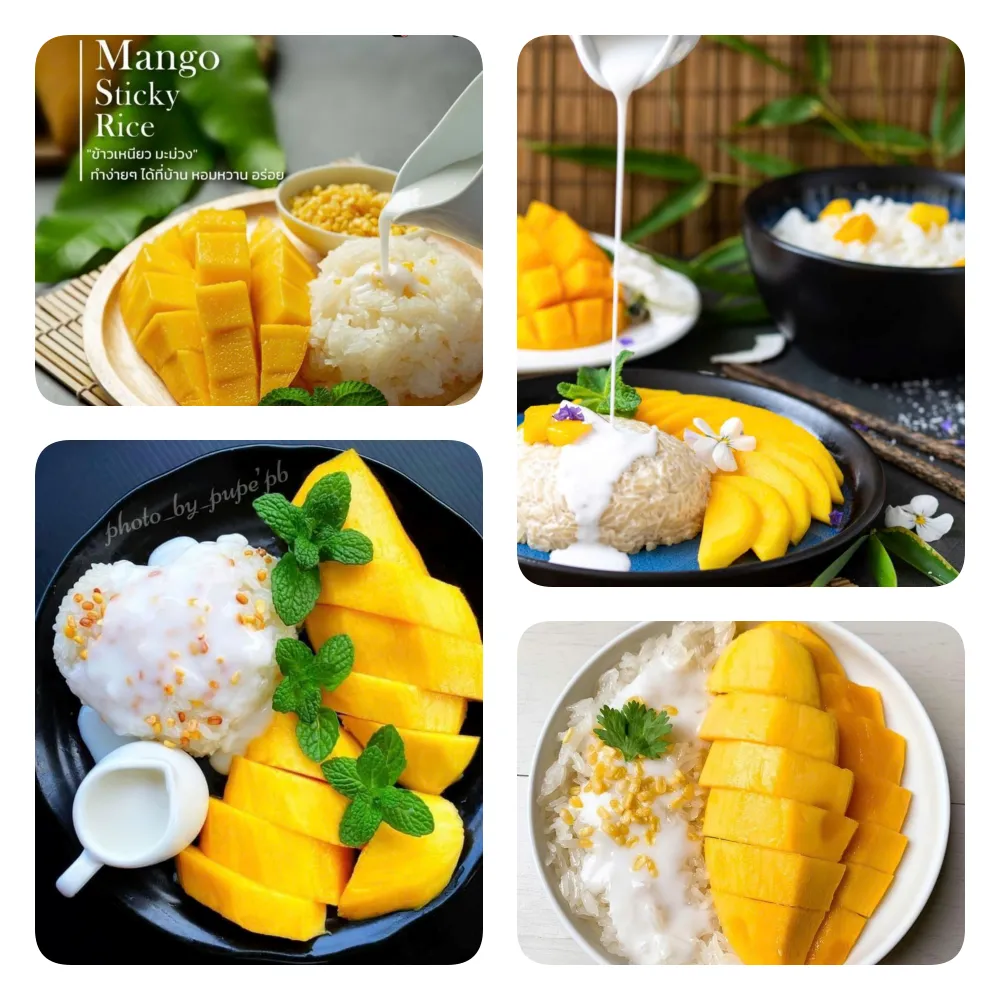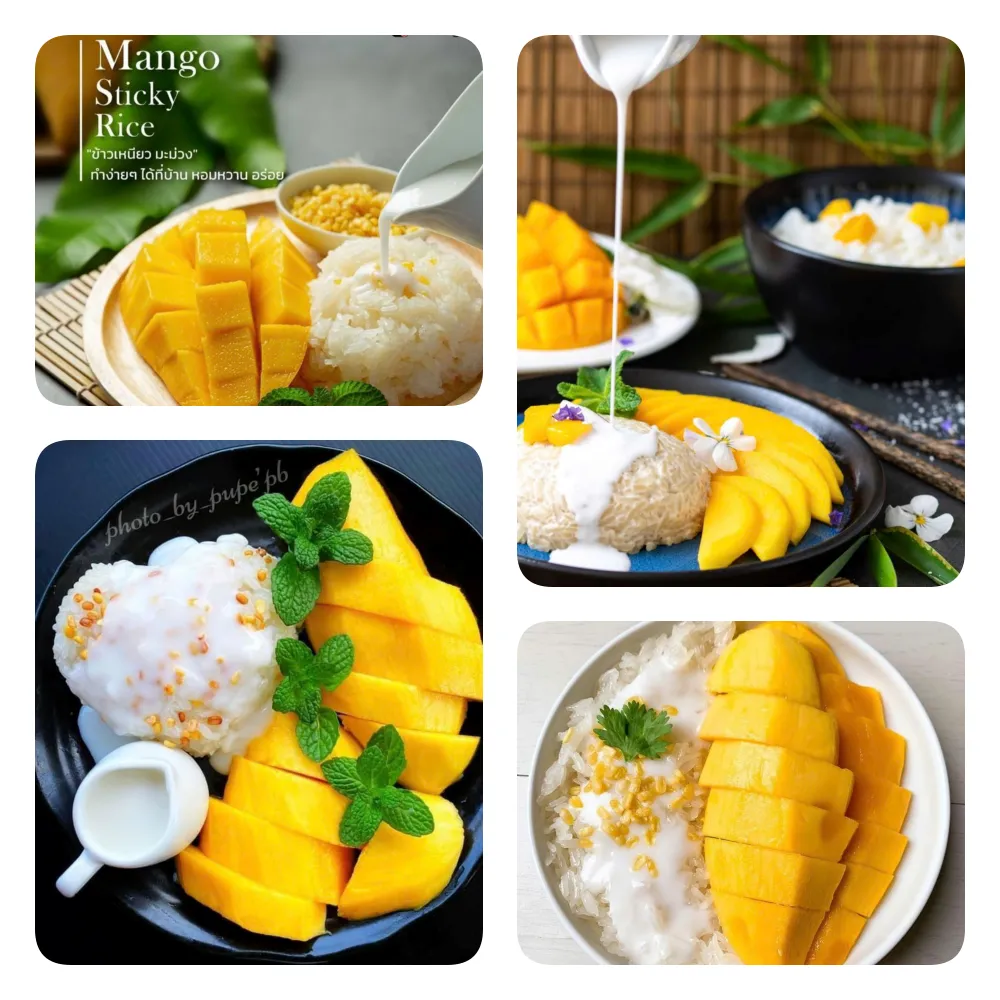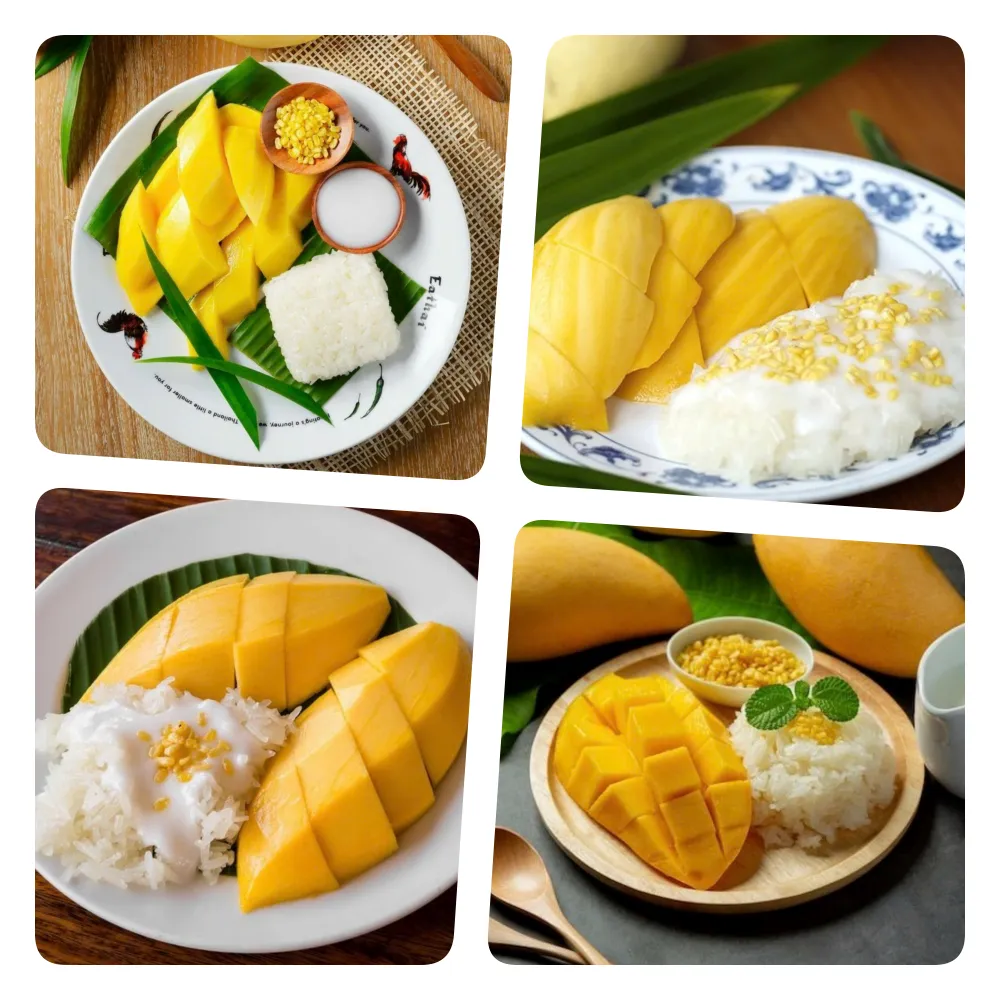
Mango Sticky Rice – A Must-Try Summer Delight in Thailand
Mango Sticky Rice, a quintessential summer treat in Thailand, can be found everywhere—from bustling street vendors to upscale restaurant menus. Thai chefs, passionate about their craft, proudly hail this dessert as the best of the season.

Thailand boasts over 200 varieties of mangoes, but only a select few are deemed perfect for crafting khao nieow mamuang—the beloved Mango Sticky Rice. Connoisseurs agree that finding the right mango is crucial for this dish.
At first glance, Mango Sticky Rice seems simple: slices of ripe, golden mango arranged beside a scoop of sticky rice, topped with coconut cream and sprinkled with crushed peanuts. Yet, when made correctly, it’s nothing short of magical, balancing flavors and textures to perfection. One of Bangkok’s most famous Mango Sticky Rice makers is Varee Jennsuwan, 63, affectionately known as the “Queen of Mango Sticky Rice.”
“The best summer dessert in Thailand is Mango Sticky Rice,” Varee asserts. She explains that March through May is when mangoes are at their peak—naturally sweet, abundant, and affordable. The sticky rice is also fragrant, as it’s freshly harvested.
Thailand’s nam dok mai mango is the top choice for this dish, prized for its intense sweetness and smooth texture. The best nam dok mai mangoes are grown in Bangkhla district, Chachoengsao province.
Another popular variety is the oak rong mango, originating from Damnoen Saduak district, Ratchaburi province. This rare mango is only harvested in small quantities in January, with a larger yield in March and April.
While mango is the star of khao nieow mamuang, other ingredients are equally important, says Varee. She selects sticky rice from Chiang Rai in northern Thailand and coconut from Suratthani in the south, known for its rich flavor that complements the rice. Peanuts are roasted rather than fried for a light crunch. Even the salt used to prepare the coconut cream is carefully chosen from Samut Sakorn, a coastal province south of Bangkok.

Mango Sticky Rice holds a special place in the hearts of people of all ages. In 2022, Thai rapper Milli (Danupha Khanatheerakul) sparked a national craving for this dessert when she ended her Coachella performance in California, USA, by serving a bowl of Mango Sticky Rice. The gesture ignited a craze across the country. In Bangkok, popular Mango Sticky Rice vendors saw a surge in orders, with delivery drivers lining up for pickups.
One of the biggest beneficiaries of the “Milli effect” was K Panich, the oldest Mango Sticky Rice shop in the capital, just a 15-minute walk from the Grand Palace. Established in 1932, this restaurant was awarded the Bib Gourmand by the Michelin Guide in 2019 for providing exceptional dining experiences at reasonable prices without compromising on quality. Throughout the week, the shop is packed with tourists, locals, and delivery drivers waiting for their orders. Inside, baskets and crates overflow with vibrant nam dok mai mangoes. Guests wishing to dine in are guided to a smoothie shop across the street to enjoy their Mango Sticky Rice.
Saowalak Chaimeesuk, 54, a customer at K Panich, believes the popularity of Mango Sticky Rice as a summer dish in Thailand is largely driven by nostalgia. “In the past, we couldn’t grow nam dok mai year-round. Now, with advances in agriculture, we can grow it in any season,” she explains.
Khun Nan, the shop’s manager, attributes the store’s longevity to its commitment to sourcing the finest ingredients from across the country, adding that dozens of international customers visit the shop daily post-pandemic.
“This is a testament to the renowned craftsmanship and deliciousness of Thai cuisine,” says Chumpol Jangprai, chef and owner of R-Haan Bangkok.
For Varee, her customers aren’t just locals; they come from mainland China, Hong Kong, and Singapore. “They say if you haven’t eaten Mango Sticky Rice at my shop, you haven’t truly visited Thailand,” the Queen of Mango Sticky Rice proudly shares.






